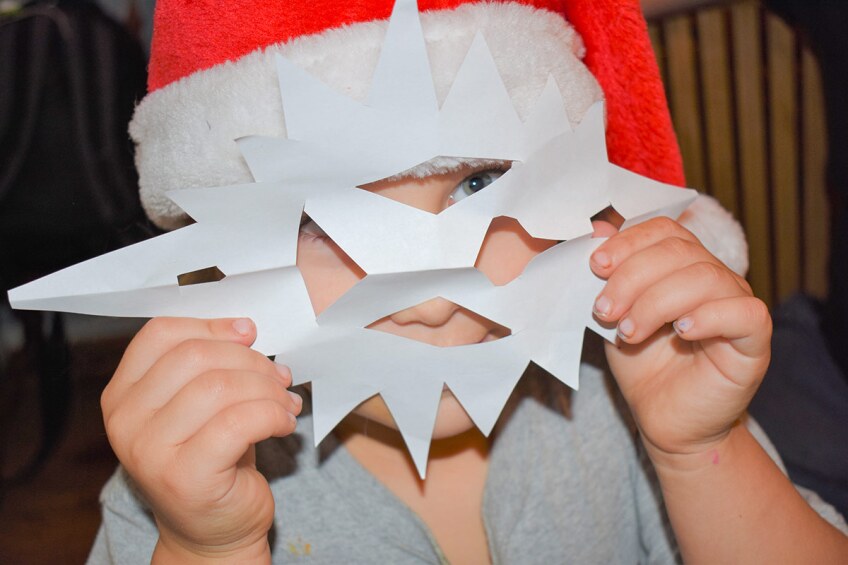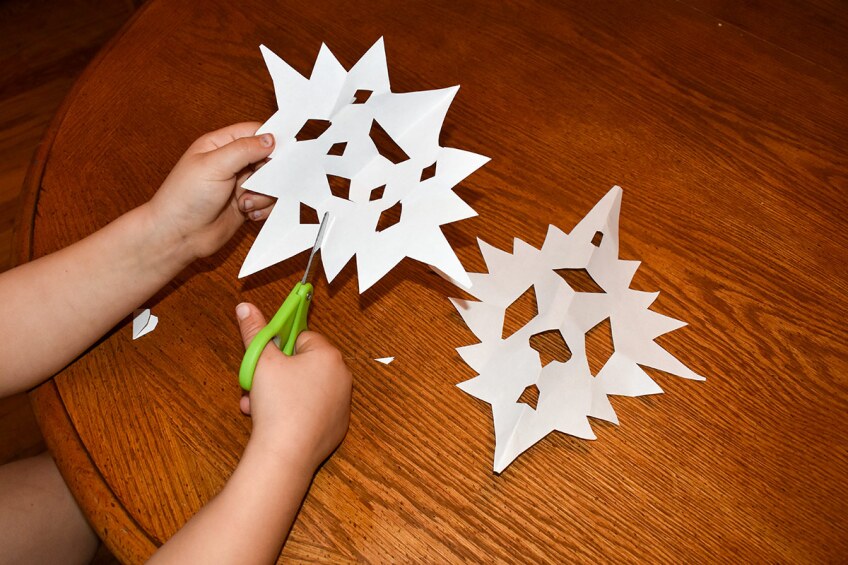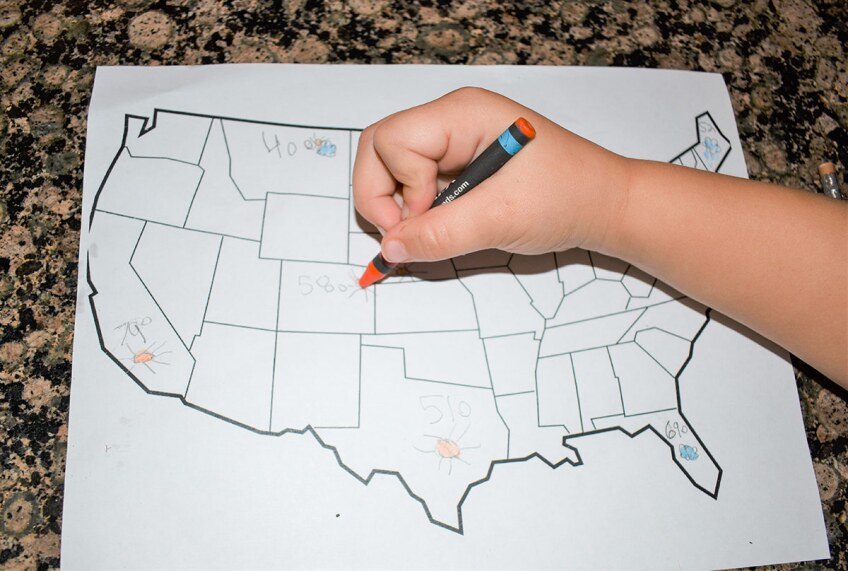5 Winter Activities to Warm up Kids' Math Skills
Each season offers new opportunities for special experiences with your child. Incorporating math into fun activities is like sneaking vegetables into their pizza sauce. It’s healthy and they don’t even notice! Here are some simple ideas to start the winter season right while building math skills.

Make Your Own Snow
Snow may not fall in your neighborhood this winter, but that doesn’t mean you can’t create your own. Using plain white paper, scissors and string, create paper snowflakes for decorating. Children can work on their folding and cutting while learning about shapes and counting. Start with a square and fold it over into a triangle then cut away one shape at a time. Show your child how when you cut a triangle into the folded paper, when you open it up, you now have a square; depending on the angle of the cut out shapes, you can make all kinds of shapes, including diamonds. Try another snowflake design by folding the paper lengthwise, then count the number of shapes in each snowflake.

With the freshly cut “snow” in hand, make the snowflakes sparkle with glitter, glue and other decorations of your choosing. Want to bring more color into the craft? You don’t need to stick to white paper! While your child makes decorations for their ceiling (so it’s always snowing) or as ornaments on the Christmas tree, there is an even more special lesson that snowflakes naturally bring: no two snowflakes are alike. Talk about how people may look alike but are always unique and special in their own way.
Map the Weather

Watching the weather helps us prepare our kids’ clothing or plan for outdoor activities, but it can also be a great way to help children learn geography and enhance their math skills. Download a blank map of the United States for your child. Using your favorite weather app or website, help your child look up the weather in your city or town and other parts of the country. You can ask them, “Is it raining at grandma’s house?” or “What does winter look like in another part of the country?” When you collect the information you need, guide your child in writing the temperature on the map where it goes. Then have them draw an icon to represent the current weather — a sun, snowflake, rain drop, cloud, lightning bolt and so on. After you map out a few locations, compare them. Which is hotter? Who has more rain? Think about why the weather varies across the country.
Take this activity to the next level by creating a weather report and sharing it aloud like a real meteorologist!
Decorate a Tree
Have you ever thought about how many ornaments are on a Christmas tree? Or how much time you spend calculating how to place the ornaments based on size and weight? Decorating a tree allows you to make math beautiful with your child. The measuring starts as soon as you choose a tree. Ask your child, “How tall is the ceiling?” “How tall is the tree?” After you choose an appropriately sized fresh or artificial tree, ask your child to explore the shapes that make up a tree. From there, focus on the lights. How many lights are on each string? How many strings will it take to make your tree glow? Countless math questions to be answered while you make family memories.
Before you string the first light, consider a decorating strategy with your child. Some people decorate with the lights circling all the way around. Some put the tree in a corner and only cover the visible parts. String up the lights however you decide then shift to the main event, the ornaments. Choose a set of ornaments that are all the same shape, such as shiny balls in different colors. Have your child count them and organize them by color and/or size. Estimate how many ornaments you need to fill the tree. You can also use your ornaments to discuss weight. Ask your child, “Which branches can hold the heavy ones?” and “How do you balance the ornaments by size so that you can enjoy them all without any being hidden?”
To finish, take photos of the decorated tree. Try it with the lights on and off to see the difference. Use this as an opportunity to balance the arrangement of ornaments on the tree.
Take a Hike
A lot of parents — and even some kids — have smartwatches or apps that track their steps. Use this technology to teach your child about measurements while getting some family exercise. How many steps does it take to walk your neighborhood? Before you head out, determine your route. Make a game of guessing how many steps your child thinks it will take for him versus you. When you get home see how close their estimate was.
Ask your child who they think walked more steps in the same route. If you have smaller children who can’t count very high yet, compare the size of your steps and even your feet! Why would a bigger person take bigger steps? Why would a smaller person take more steps over the same distance? Beyond the steps, consider the actual distance of your walk. When you return home, hop into the car and use the odometer to confirm your distance.
Want to take it further? Bring a compass to talk about directions and cardinal points.
Bake Holiday Treats
Math can be super tasty! Whether baking holiday cookies is a time honored tradition or you’re just trying it out, find ways to sprinkle a little math into your cookies. Preheat the oven and talk about how many degrees the dough needs to become a cookie. As you collect the ingredients, ask your child, “How many cookies do we want to make?” “How many eggs do we need?” Have your child help you fill the measuring cups based on the recipe. Making a double batch? Congrats! You’re working on multiplication.
As you roll out the dough, talk about width and length and ask “Do we want thin or thick cookies?” Then, it’s time for geometry! Talk to your child about shapes by asking “Which shapes do you want to make your cookies?” and “How is a circle different to a star?” Compare cookies of the same shape but of different sizes. You can even use a gingerbread person cutter to talk about body parts and pairs. When all the math is figured out, take a bite and enjoy! And remember this golden rule: a messy cookie is still a tasty cookie.





